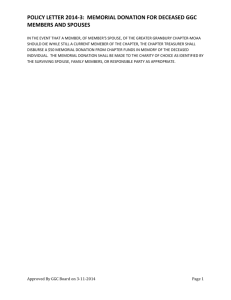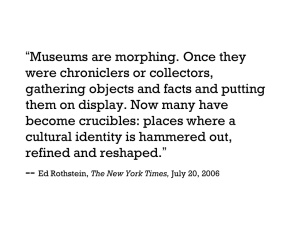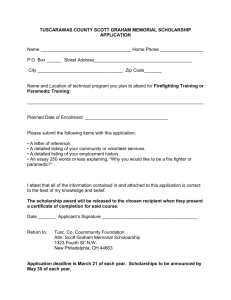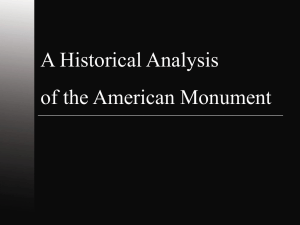Writing a list description activity sheet
advertisement
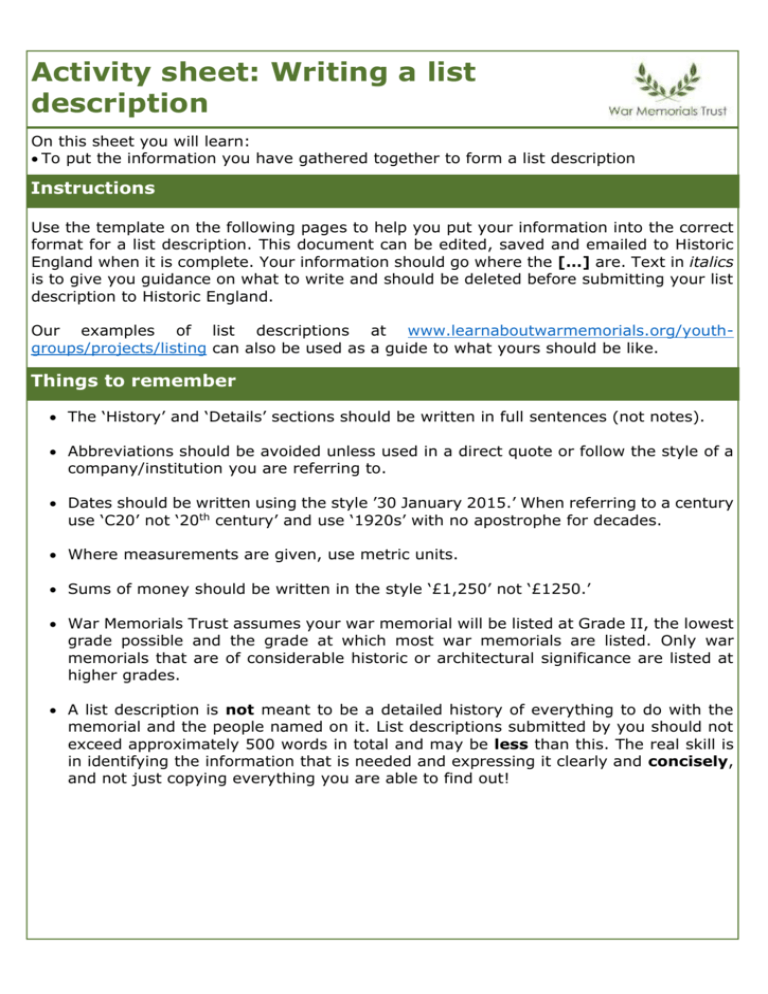
Activity sheet: Writing a list description On this sheet you will learn: To put the information you have gathered together to form a list description Instructions Use the template on the following pages to help you put your information into the correct format for a list description. This document can be edited, saved and emailed to Historic England when it is complete. Your information should go where the […] are. Text in italics is to give you guidance on what to write and should be deleted before submitting your list description to Historic England. Our examples of list descriptions at www.learnaboutwarmemorials.org/youthgroups/projects/listing can also be used as a guide to what yours should be like. Things to remember The ‘History’ and ‘Details’ sections should be written in full sentences (not notes). Abbreviations should be avoided unless used in a direct quote or follow the style of a company/institution you are referring to. Dates should be written using the style ’30 January 2015.’ When referring to a century use ‘C20’ not ‘20th century’ and use ‘1920s’ with no apostrophe for decades. Where measurements are given, use metric units. Sums of money should be written in the style ‘£1,250’ not ‘£1250.’ War Memorials Trust assumes your war memorial will be listed at Grade II, the lowest grade possible and the grade at which most war memorials are listed. Only war memorials that are of considerable historic or architectural significance are listed at higher grades. A list description is not meant to be a detailed history of everything to do with the memorial and the people named on it. List descriptions submitted by you should not exceed approximately 500 words in total and may be less than this. The real skill is in identifying the information that is needed and expressing it clearly and concisely, and not just copying everything you are able to find out! [Name of memorial] war memorial list entry Name and address: This is the name and address of the war memorial. The name may be the name of the town, village or other place where it is located or may refer to an individual or group commemorated. Be as specific as possible with the address - include the name of any church or building the memorial is in the grounds of or other information such as whether the memorial is on a village green or at the junction of two roads. […] Custodian: This is the person or group responsible for the memorial. Include if known. […] Custodian contact: This is the named person from that organisation who can be contacted regarding the memorial. Include if known. […] Custodian contact details: This is the contact details for the person named above. Include if known (an email address is sufficient). […] REASON FOR DESIGNATION RECOMMENDATION This is the reasons why the memorial should be listed. The following will apply to all war memorials listed through the Centenary Listing Project and should be used: The war memorial is recommended for designation at Grade II for the following principal reason: Historic Interest: as an eloquent witness to the tragic impact of world events on the local community, and the sacrifice it made in the conflicts of the C20. LIST ENTRY History This is a brief history of the memorial and might include: When the memorial was unveiled and who by Who designed the memorial Any additions, repairs or changes that have happened to the memorial since the unveiling, and when these were. […] Details This is the physical description of the memorial. It should include the following information: The type of memorial and the main material (for example, a granite wheel cross; a cenotaph of Portland stone) A description of the main components of the memorial, including their shape/form (for example, circular two-stepped base; a Latin cross on an octagonal shaft; a column on top of a square plinth; a bronze statue of a serviceman; steps leading to the memorial). It is helpful to start at the top of the memorial and work down to ensure all the main components are included. Details of any further decorative elements (for example, a sword carved in relief on the front face of the cross) Inscriptions (excluding names) written in capitals with line breaks indicated with a /. You also need to explain where and how these appear on the memorial (for example, the front face of the plinth reads...; a plaque fixed to the steps is inscribed...; all inscriptions are in raised lead lettering/have been painted/are incised. Any other features which form part of the memorial (for example, the memorial is enclosed by a low fence). […]
